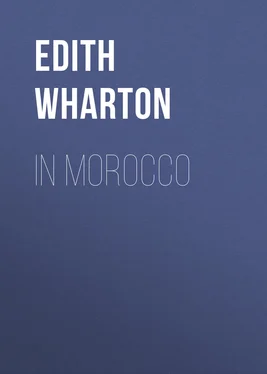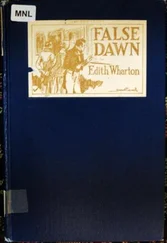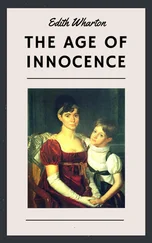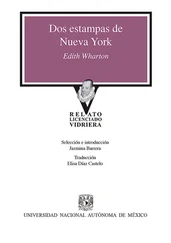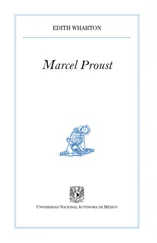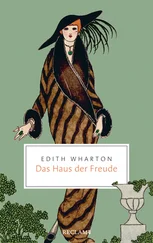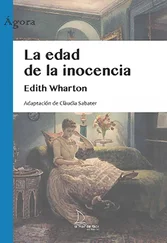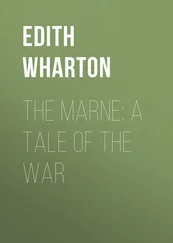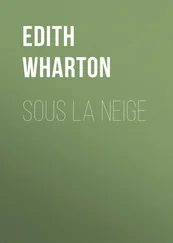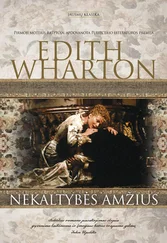Edith Wharton - In Morocco
Здесь есть возможность читать онлайн «Edith Wharton - In Morocco» — ознакомительный отрывок электронной книги совершенно бесплатно, а после прочтения отрывка купить полную версию. В некоторых случаях можно слушать аудио, скачать через торрент в формате fb2 и присутствует краткое содержание. Жанр: Путешествия и география, История, foreign_edu, foreign_antique, foreign_prose, на английском языке. Описание произведения, (предисловие) а так же отзывы посетителей доступны на портале библиотеки ЛибКат.
- Название:In Morocco
- Автор:
- Жанр:
- Год:неизвестен
- ISBN:нет данных
- Рейтинг книги:5 / 5. Голосов: 1
-
Избранное:Добавить в избранное
- Отзывы:
-
Ваша оценка:
- 100
- 1
- 2
- 3
- 4
- 5
In Morocco: краткое содержание, описание и аннотация
Предлагаем к чтению аннотацию, описание, краткое содержание или предисловие (зависит от того, что написал сам автор книги «In Morocco»). Если вы не нашли необходимую информацию о книге — напишите в комментариях, мы постараемся отыскать её.
In Morocco — читать онлайн ознакомительный отрывок
Ниже представлен текст книги, разбитый по страницам. Система сохранения места последней прочитанной страницы, позволяет с удобством читать онлайн бесплатно книгу «In Morocco», без необходимости каждый раз заново искать на чём Вы остановились. Поставьте закладку, и сможете в любой момент перейти на страницу, на которой закончили чтение.
Интервал:
Закладка:
Inside the gate of the Kasbah one comes on more waste land and on other walls—for all Moroccan towns are enclosed in circuit within circuit of battlemented masonry. Then, unexpectedly, a gate in one of the inner walls lets one into a tiled court enclosed in a traceried cloister and overlooking an orange-grove that rises out of a carpet of roses. This peaceful and well-ordered place is the interior of the Medersa (the college) of the Oudayas. Morocco is full of these colleges, or rather lodging-houses of the students frequenting the mosques; for all Mahometan education is given in the mosque itself, only the preparatory work being done in the colleges. The most beautiful of the Medersas date from the earlier years of the long Merinid dynasty (1248-1548), the period at which Moroccan art, freed from too distinctively Spanish and Arab influences, began to develop a delicate grace of its own as far removed from the extravagance of Spanish ornament as from the inheritance of Roman-Byzantine motives that the first Moslem invasion had brought with it from Syria and Mesopotamia.
These exquisite collegiate buildings, though still in use whenever they are near a well-known mosque, have all fallen into a state of sordid disrepair. fortunately to build in the old tradition, which has never been lost—has, like all Orientals, an invincible repugnance to repairing and restoring, and one after another the frail exposed Arab structures, with their open courts and badly constructed terrace-roofs, are crumbling into ruin. Happily the French Government has at last been asked to intervene, and all over Morocco the Medersas are being repaired with skill and discretion. That of the Oudayas is already completely restored, and as it had long fallen into disuse it has been transformed by the Ministry of Fine Arts into a museum of Moroccan art.
The plan of the Medersas is always much the same: the eternal plan of the Arab house, built about one or more arcaded courts, with long narrow rooms enclosing them on the ground floor, and several stories above, reached by narrow stairs, and often opening on finely carved cedar galleries. The chief difference between the Medersa and the private house, or even the fondak , 4 4 The Moroccan inn or caravanserai.
lies in the use to which the rooms are put. In the Medersas, one of the ground-floor apartments is always fitted up as a chapel, and shut off from the court by carved cedar doors still often touched with old gilding and vermilion. There are always a few students praying in the chapel, while others sit in the doors of the upper rooms, their books on their knees, or lean over the carved galleries chatting with their companions who are washing their feet at the marble fountain in the court, preparatory to entering the chapel.
In the Medersa of the Oudayas, these native activities have been replaced by the lifeless hush of a museum. The rooms are furnished with old rugs, pottery, brasses, the curious embroidered hangings which line the tents of the chiefs, and other specimens of Arab art. One room reproduces a barber's shop in the bazaar, its benches covered with fine matting, the hanging mirror inlaid with mother-of-pearl, the razor-handles of silver niello . The horseshoe arches of the outer gallery look out on orange-blossoms, roses and the sea. It is all beautiful, calm and harmonious; and if one is tempted to mourn the absence of life and local colour, one has only to visit an abandoned Medersa to see that, but for French intervention, the charming colonnades and cedar chambers of the college of the Oudayas would by this time be a heap of undistinguished rubbish—for plaster and rubble do not "die in beauty" like the firm stones of Rome.
V
ROBINSON CRUSOE'S "SALLEE"
Before Morocco passed under the rule of the great governor who now administers it, the European colonists made short work of the beauty and privacy of the old Arab towns in which they established themselves.
On the west coast, especially, where the Mediterranean peoples, from the Phenicians to the Portuguese, have had trading-posts for over two thousand years, the harm done to such seaboard towns as Tangier, Rabat and Casablanca is hard to estimate. The modern European colonist apparently imagined that to plant his warehouses, cafés and cinema-palaces within the walls which for so long had fiercely excluded him was the most impressive way of proclaiming his domination.
Under General Lyautey such views are no longer tolerated. Respect for native habits, native beliefs and native architecture is the first principle inculcated in the civil servants attached to his administration. Not only does he require that the native towns shall be kept intact, and no European building erected within them; a sense of beauty not often vouchsafed to Colonial governors causes him to place the administration buildings so far beyond the walls that the modern colony grouped around them remains entirely distinct from the old town, instead of growing out of it like an ugly excrescence.
The Arab quarter of Rabat was already irreparably disfigured when General Lyautey came to Morocco; but ferocious old Salé, Phenician counting-house and breeder of Barbary pirates, had been saved from profanation by its Moslem fanaticism. Few Christian feet had entered its walls except those of the prisoners who, like Robinson Crusoe, slaved for the wealthy merchants in its mysterious terraced houses. Not till two or three years ago was it completely pacified; and when it opened its gates to the infidel it was still, as it is to-day, the type of the untouched Moroccan city—so untouched that, with the sunlight irradiating its cream-coloured walls and the blue-white domes above them, it rests on its carpet of rich fruit-gardens like some rare specimen of Arab art on a strip of old Oriental velvet.
Within the walls, the magic persists: which does not always happen when one penetrates into the mirage-like cities of Arabian Africa. Salé has the charm of extreme compactness. Crowded between the river-mouth and the sea, its white and pale-blue houses almost touch across the narrow streets, and the reed-thatched bazaars seem like miniature reductions of the great trading labyrinths of Tunis or Fez.
Everything that the reader of the Arabian Nights expects to find is here: the whitewashed niches wherein pale youths sit weaving the fine mattings for which the town is still famous; the tunnelled passages where indolent merchants with bare feet crouch in their little kennels hung with richly ornamented saddlery and arms, or with slippers of pale citron leather and bright embroidered babouches ; the stalls with fruit, olives, tunny-fish, vague syrupy sweets, candles for saints' tombs, Mantegnesque garlands of red and green peppers, griddle-cakes sizzling on red-hot pans, and all the varied wares and cakes and condiments that the lady in the tale of the Three Calanders went out to buy, that memorable morning in the market of Bagdad.
Only at Salé all is on a small scale: there is not much of any one thing, except of the exquisite matting. The tide of commerce has ebbed from the intractable old city, and one feels, as one watches the listless purchasers in her little languishing bazaars, that her long animosity against the intruder has ended by destroying her own life.
The feeling increases when one leaves the bazaar for the streets adjoining it. An even deeper hush than that which hangs over the well-to-do quarters of all Arab towns broods over these silent thorough-fares, with heavy-nailed doors barring half-ruined houses. In a steep deserted square one of these doors opens its panels of weather-silvered cedar on the court of the frailest, ghostliest of Medersas—mere carved and painted shell of a dead house of learning. Mystic interweavings of endless lines, patient patterns interminably repeated in wood and stone and clay, all are here, from the tessellated paving of the court to the honeycombing of the cedar roof through which a patch of sky shows here and there like an inset of turquoise tiling.
Читать дальшеИнтервал:
Закладка:
Похожие книги на «In Morocco»
Представляем Вашему вниманию похожие книги на «In Morocco» списком для выбора. Мы отобрали схожую по названию и смыслу литературу в надежде предоставить читателям больше вариантов отыскать новые, интересные, ещё непрочитанные произведения.
Обсуждение, отзывы о книге «In Morocco» и просто собственные мнения читателей. Оставьте ваши комментарии, напишите, что Вы думаете о произведении, его смысле или главных героях. Укажите что конкретно понравилось, а что нет, и почему Вы так считаете.
